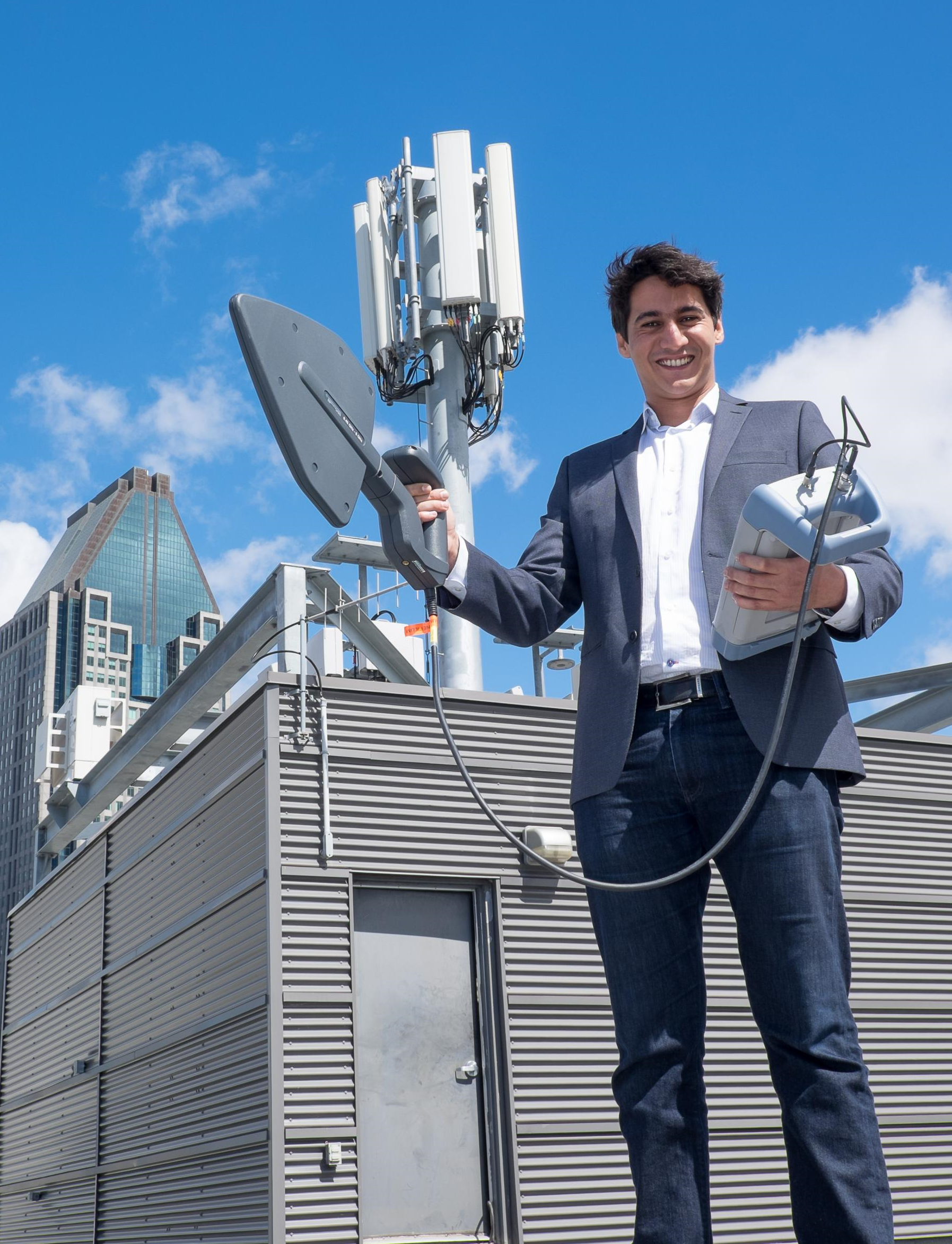In war, disasters or emergency situations, where communications links are a matter of life or death, wireless communications often fall short.
For Sofiane Bounaffaa, the challenge of designing communications systems that can function in volatile or remote surroundings has turned into a commercial opportunity.
In 2012, as a graduate student at Montreal’s École de technologie supérieure (ÉTS), he helped develop high-capacity tactical radios for the Canadian military. Today, he is CEO of a startup that helps a wide range of companies with wireless communication challenges.
Bounaffaa did his Master’s degree at ÉTS with François Gagnon, Professor of Electrical Engineering, and Natural Sciences and Engineering Research Council Ultra Electronics Chair in Wireless Emergency and Tactical Communication. (He came to ÉTS from the Lille University of Science and Technology in France.) Together, they worked with industrial partner Ultra Electronics TCS on state-of-the-art military radios.
One of the hurdles they overcame was signal-jamming, and their solution has become a platform that’s now helping others solve similar challenges. Using the design and analytical capabilities of MATLAB, Bounaffaa developed a simulator with the exact coding needed to test and improve radio functionality before implementing his design.
His experience was truly cooperative – his academic work was paired with half-time work at the company, developing algorithms for radios and then demonstrating and testing their performance in the field.
That project was so successful that Bounaffaa is still working with the company while continuing to develop his simulator technology and supervising students and researchers working in similar applications. “When a student creates, or a company buys a new algorithm, they can now simulate the radio to test their results,” he says.
He and his supervisor also designed communications systems that would function in emergency situations such as the shooting at Dawson College in 2006, when wireless communication systems failed because they were overloaded.
“It was great to put the theory I had been working on into practice,” says Bounaffaa, who joined Gagnon’s lab as a research associate after he finished his degree in 2014.
Bounaffaa says CMC Microsystems has been extremely helpful in enabling his simulator work. “We used a very powerful CMC server for running huge simulations on MATLAB, giving us results in a few hours instead of a week. We also benefited from CMC equipment such as network analysers, spectrum analysers, oscilloscopes and software.”
The researchers’ military experience had a spinoff effect: commercial clients began to seek out their expertise in designing wireless systems or improving
existing networks.
“So we decided to start a company,” says Bounaffaa. “The experience with the military was very helpful, because we conceived very robust wireless networks using state-of-the-art technologies.” He is CEO of SineFilum, established in April 2016. The firm now has three employees.
SineFilum designs, builds and maintains wireless infrastructure for a wide range of customers with different needs. He says that 70 per cent of mobile traffic is now in buildings, not outdoors. Spotty coverage can be a problem for office buildings, malls and hospitals.
In many of these environments, the challenge is making sure that smartphones and other wireless devices can function in every part of the building. For other clients, Sine Filum delivers customized solutions that allow the transmission of real-time data from power lines or other remote sites.
Their system works on both indoor and outdoor networks, including cellular macrocells, distributed antenna systems (DAS), public safety radios, enterprise Wi-Fi/WLAN and mesh networks.
The company also offers many wireless and RF engineering services: design, propagation studies, coverage or capacity validation, drive/walk testing, interference identification and resolution, third-party validation and safety standard validation.
“We figure out how to make the system work when there is no on-the-shelf solution,” says Bounaffaa.
Photo: Yves Clement/Photo Features
June 2017

